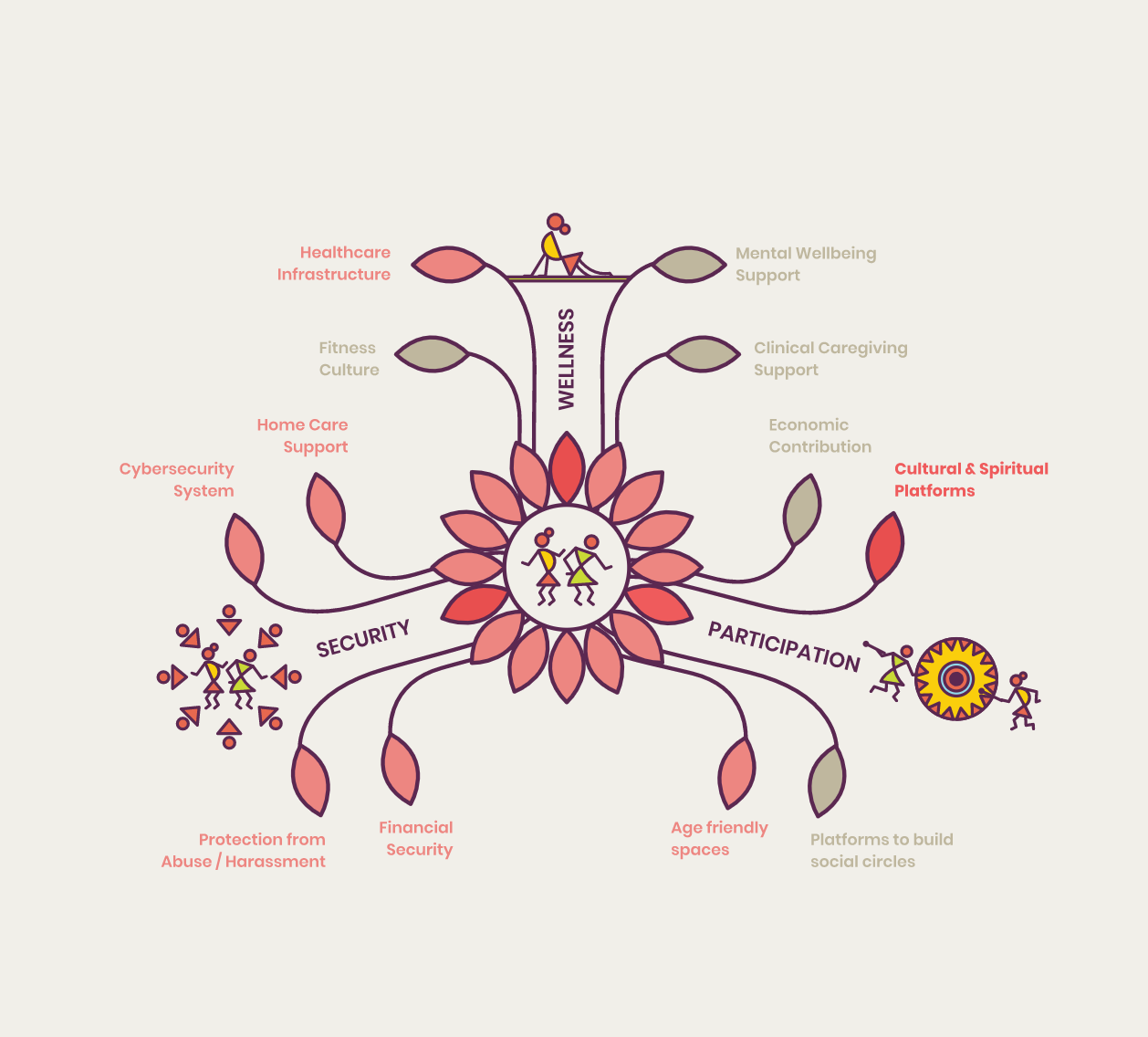Born in the baby boomer generation, the late Rammoorthy uncle chose to live single throughout his life. In the 20th century days this was an uncommon decision considered divergent, even for men. With a respectable and admirable personality, what made him more admirable and appealing to a young millennial me was that, not only did he choose to stay single, he had planned his later adulthood and chose to live his later years at a senior living facility!
In India, even today there is stigma associated with this choice of living at a senior care facility. To elaborate, there are three types of living facilities presently available for the 55+ — old age homes, senior living facilities and assisted living facilities.
Historically old age homes, aka almhouses, were established for the destitute adults in their later ages, living by themselves with less to no financial and social security. Their destitution was either a circumstantial push or an intentional ostracisation by family. Being a strong collectivistic culture, the perception of living at a charity home, without ones own family, is hurting and fearful. And so the act of not living with one’s own children or extended family, by choice or as a circumstantial bargain, was and is socially stigmatised both among the poor and the afforded.
However, the gradually growing market of ‘assisted living’ and ‘senior living’ facilities have successfully painted a different stroke by portraying a desirable lifestyle and appealing to the ‘affordable’ user segments who are nowadays becoming more practical with their lifestyle expectations beyond 60–65.
Senior living facilities, aka retirement homes, are for the 55+ who are able to live independently. Often these senior living facilities themselves upgrade to provide 24*7 assistance and caregiving support when the older adults face mobility and other impediments to living independently. Then there are assisted living homes exclusively for care dependent older adults and for families who are unable to accommodate, in space and time, dependent older adults at home. A few of these facilities also provide palliative care.
As is, naturally old age homes depend on social welfare contributions, senior and assisted living facilitates are for profit real-estate businesses. These businesses are strategically positioned for ageing parents having strong ties with children living abroad. And so the facilities’ buying prices can be afforded only by a few families that can stretch the financial length.
Nevertheless, my ageing single uncle was able to find a pocket friendly senior living facility. How?
Choosing to live an independent, as a young adult he knew that he may need to find care outside of his extended family. So he planned his finances meticulously. Hailing from a family that has expressive superstitions and fears associated with even the utterance of the word death, Rammoorthy uncle thought hard and long about his life time, including his own death.
Based on his anticipated life expectancy he allocated financial savings and investments. And so when he retired and his brother had passed-on, he was both financially and emotionally ready to find life within senior living facilities.
His choosing of the facility was not merely based on economic consideration. Whilst choosing a senior living facility, him and many older adults I have come across, also zoom into options that satisfy their socialising needs. They want to be around like-minded people, and if possible be closer to extended family members. Accordingly my uncle chose a facility at a location that allows him access to his extended family of niece, nephews and cousins whom he endearingly loves. He made friends at the facility. Enjoyed hosting family at his room, showing them around and introducing his facility friends to them.
He was ‘settled’, one could say.
But during his later days other life realities caught on.
Following industrial era practices, regardless of our cognitive and physical ability, we are forced to retire at sixty or sixty-five. Our opportunities to continue working are less and our intent to work later in life are also less, thanks to the social norms that do not encourage working during later adulthood. What this means is, our regular cash inflow stops and it is time to live off our savings, interests and investments. What doesn’t stop however is our role as consumers, one. And two, the increasing prices of products and services that we consume. Particularly the real estate services.
Most residential, condominium like facilities make profit via their maintenance charges. And it is usual practice for the facility manager/RWA to consistently increase the maintenance charges every few years. The same practice is followed in senior living facilities.
We live in a capitalism embracing society that make products and services for the majority. In the process the fringe category of general population get left out always — one of the major concerns of inclusive design. Likewise, these senior living facilities, as mentioned before, are exclusively designed for older adults with children abroad. Not necessarily for independent adults like my uncle.
And so these consistently increasing costs induced mental stress in him. He was physically and cognitively able. But working at that age was unheard of. He had his fears on how he will manage, that too with no cash inflow. As a financially sound decision maker, of course he had done his best to adjust for inflations and anticipate hike in lifestyle expenses. However what he hadn’t expected was the lengthening time of his own life.
He had literally out-lived his expectations.
Added to these financial uncertainties, his social circle was also shrinking. He was losing a few of his family and friends, his age, to their end of life.
Whether these stressors got to him or not. We can never know. One day after lunch he told his friend at the facility that he was going to take a nap. And will meet again for tea. But that was that. He never woke up from his sleep. He had passed on in his mid-day sleep.
To those who may be thinking, he didn’t die alone — not a sight of sympathy and pity. He chose his lifestyle and stayed independent. The news of his death did break hearts in the family. There were people who shed tears and missed him, including me. His life, himself and his choices inspired and continues to inspire work at Vayasu.
While there may be scientists looking into reversing ageing or whether ageing is a disease, with what evidence we have now, we know that death is inevitable. And so is loneliness, especially during our later adulthood. Rammoorthy uncle expected them and embraced them both. But the societal ecosystems he was part of could have better supported him.
— —
We live in a global society where 65–60 years old persons are, in many nations, considered ‘dependents’ and ‘non-working age’. We are forced to retire at 60. All this, regardless of our physical and cognitive capabilities. A blanket practice followed in most white collared jobs. These practices have in turn nurtured mindsets that don’t seek to work after ‘retirement’ unless there is a financial necessity.
At Vayasu we understand that not all of us hitting later adulthood are able to sustain the ambitious energy of early adulthood. We understand that as we grow older we may seek to give more than seek to achieve aspirations.
However what we question is, where are the opportunities?
Drawing from our previous article, active ageing is possible only when its ecosystem supports:

Inspired by WHO’s Active Ageing Ecosystem. Designed by Mohana Priya Babu & Srilakshmi
Active ageing need not necessarily mean actively working until death. But it does mean actively enabling financial security to self until our physical cognitive selves allow us. Studies are finding that through early and later adulthood, continuing to stimulate executive functionings of the brain (working memory, inhibitory control, cognitive flexibility, planning, reasoning, and problem solving) facilitates better and healthier ageing.

